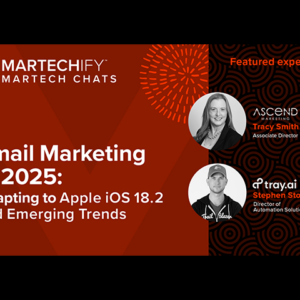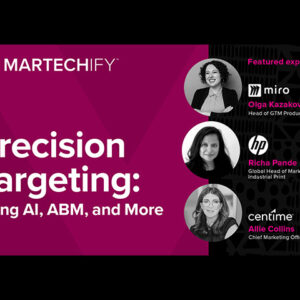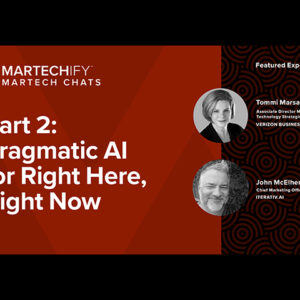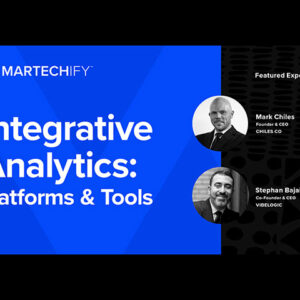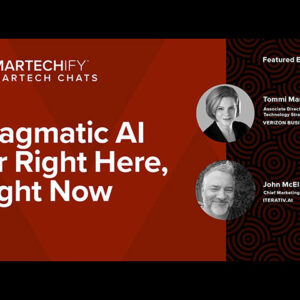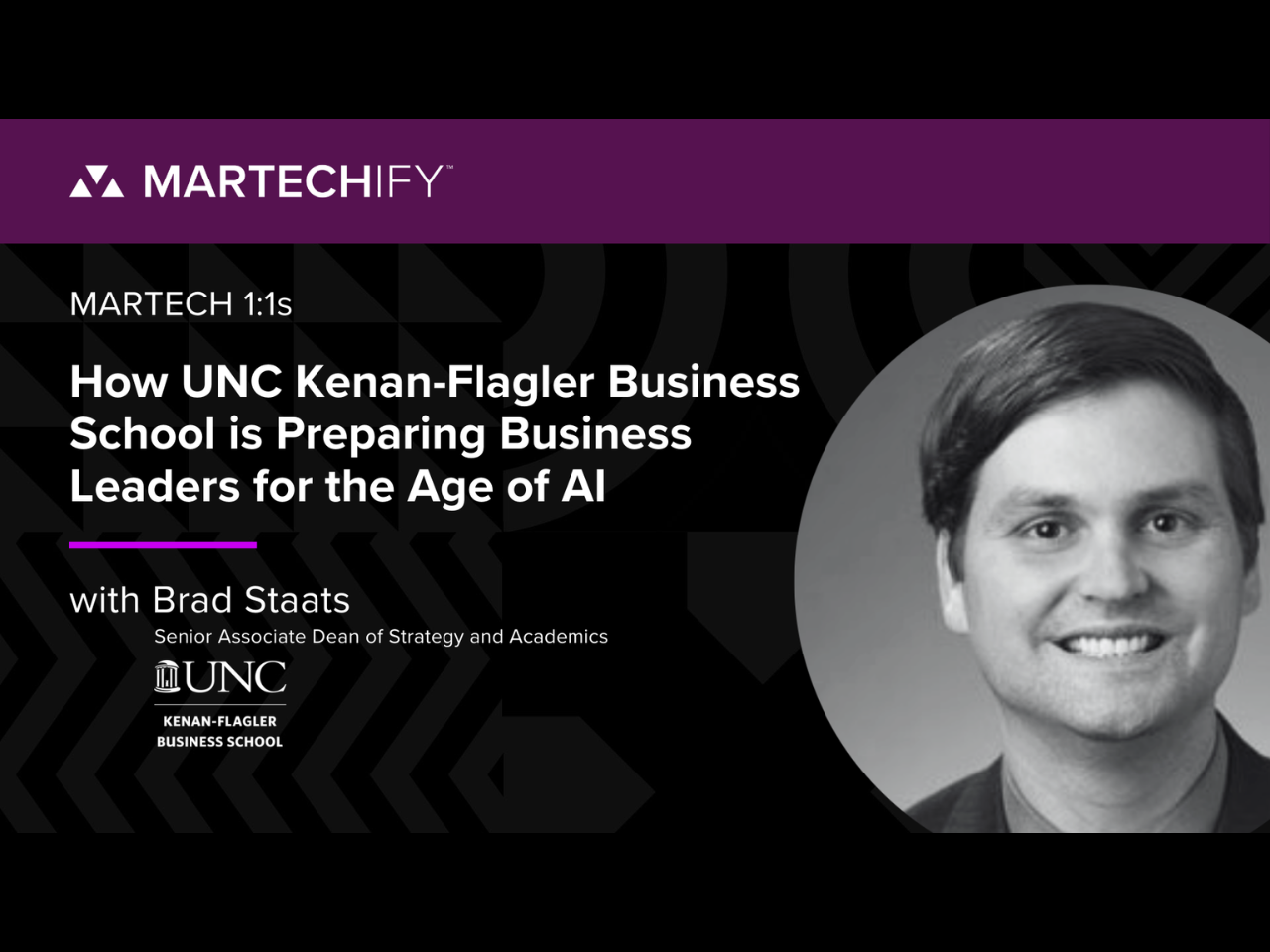From FOMO to FOMU: AI’s Impact on Marketing and Users
- James McNeal, Director of Digital Marketing Programs at SHI International
- AI and Automation, Digital Transformation, Other Martech, Strategy and Trends
In a recent Martechify conversation, James McNeal, Director of Digital Marketing Programs at SHI International, shared his perspective on the fast-changing landscape of digital marketing and the role of AI.
Watch the full interview with James McNeal, where he shares his thoughts on AI, and the impact it’s having on the marketing community. This is a must watch interview!
The challenge of digital in an AI-driven world
James described digital marketing as “everything under the sun,” from SEO and websites to multi-channel campaigns across LinkedIn, Meta, Google, connected TV, and programmatic display. He explained that the rise of generative engine optimization has shifted the rules of visibility online.
“What Google has done in recent months—with AI mode and the transition to more GEO (or generative engine optimization) efforts—has definitely changed the game. We have seen a dip in impressions and traffic, but we’ve offset that with optimizations. We’re still seeing consistent growth,” James said.
For him, full-funnel strategy is key: awareness at the top, demand generation in the middle, and conversion at the bottom. “Digital marketing as a whole is a lot, but we’re able to develop these full-funnel strategies within each of our pillars, and that’s the way we go to market,” he noted.
“What Google has done in recent months—with AI mode and the transition to more GEO (or generative engine optimization) efforts—has definitely changed the game. We have seen a dip in impressions and traffic, but we’ve offset that with optimizations. We’re still seeing consistent growth,” James said.
For him, full-funnel strategy is key: awareness at the top, demand generation in the middle, and conversion at the bottom. “Digital marketing as a whole is a lot, but we’re able to develop these full-funnel strategies within each of our pillars, and that’s the way we go to market,” he noted.
Creativity and messaging: from FOMO to FOMU
James also highlighted the importance of messaging that resonates with the feelings of both excitement and hesitation around AI. He described a campaign built on the dual concepts of Fear of Missing Out (FOMO) and Fear of Messing Up (FOMU).
“You have FOMO on one side—people who don’t want to miss out on the AI party. But then you have FOMU on the other side—those afraid of messing up if they dive in too quickly. We wanted a concept that really lands in this market and that nobody else is using,” he explained.
This creative framing acknowledges both enthusiasm for innovation and the anxiety that often comes with adopting new technologies.
“You have FOMO on one side—people who don’t want to miss out on the AI party. But then you have FOMU on the other side—those afraid of messing up if they dive in too quickly. We wanted a concept that really lands in this market and that nobody else is using,” he explained.
This creative framing acknowledges both enthusiasm for innovation and the anxiety that often comes with adopting new technologies.
Changing user behaviors
James sees AI not just as a tool but as a force reshaping how people search and consume information. “It’s fascinating how quickly we’re becoming dependent on AI to drive business progress. In digital marketing, user behavior is shifting. People no longer rely on short keyword searches; they want specific answers to complex questions. That means our content must both ask and answer the right questions immediately, because if it doesn’t, AI won’t surface it,” he said.
According to James, success now depends on being present, relevant, and solution-driven in real time. “What’s the problem? What’s the issue? What’s the solution? It needs to be immediate,” he emphasized.
According to James, success now depends on being present, relevant, and solution-driven in real time. “What’s the problem? What’s the issue? What’s the solution? It needs to be immediate,” he emphasized.
The biggest shift in 15 years
James believes the recent introduction of AI summaries in Google Search is a turning point. “It’s probably the biggest change that I’ve seen in Google in my career of digital marketing over the last 15 years. User behaviors really started to change in the past three months, and Google has been on the forefront of that change.”
Looking ahead
James’s reflections point to a marketing environment defined by constant adaptation. AI is no longer optional; it is woven into how users search, how companies communicate, and how strategies must be built. For marketers, the challenge is balancing curiosity and caution, creativity and measurement, FOMO and FOMU.


